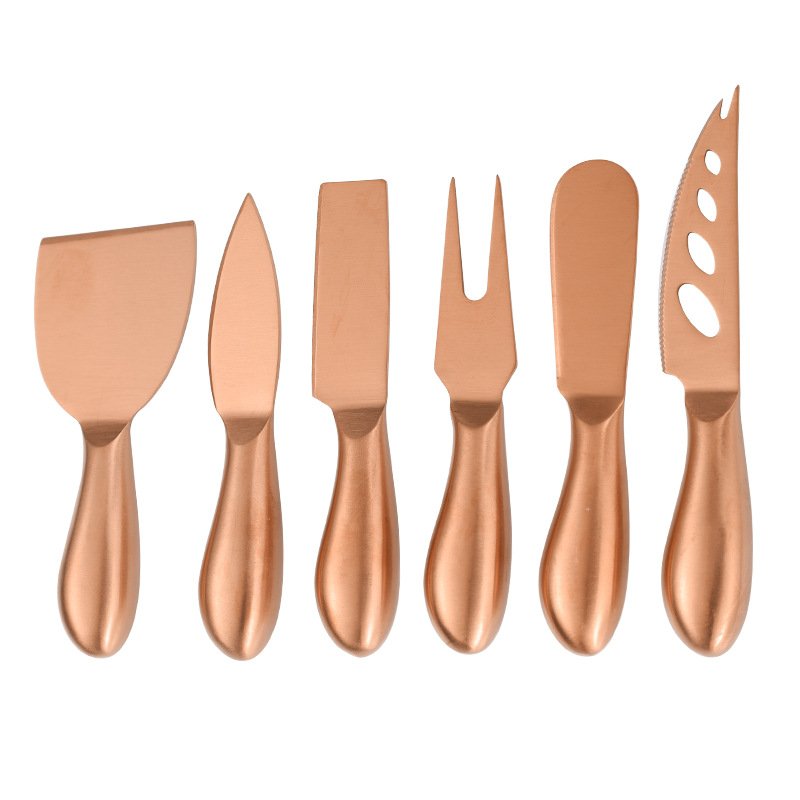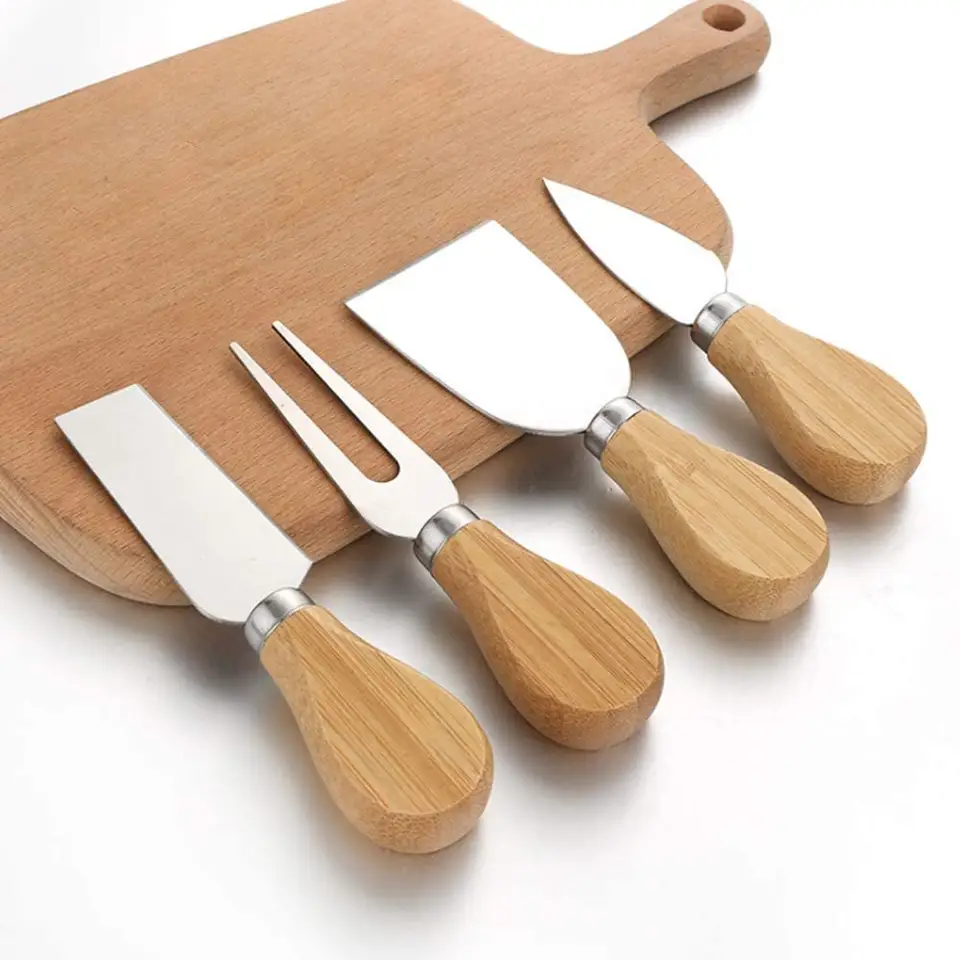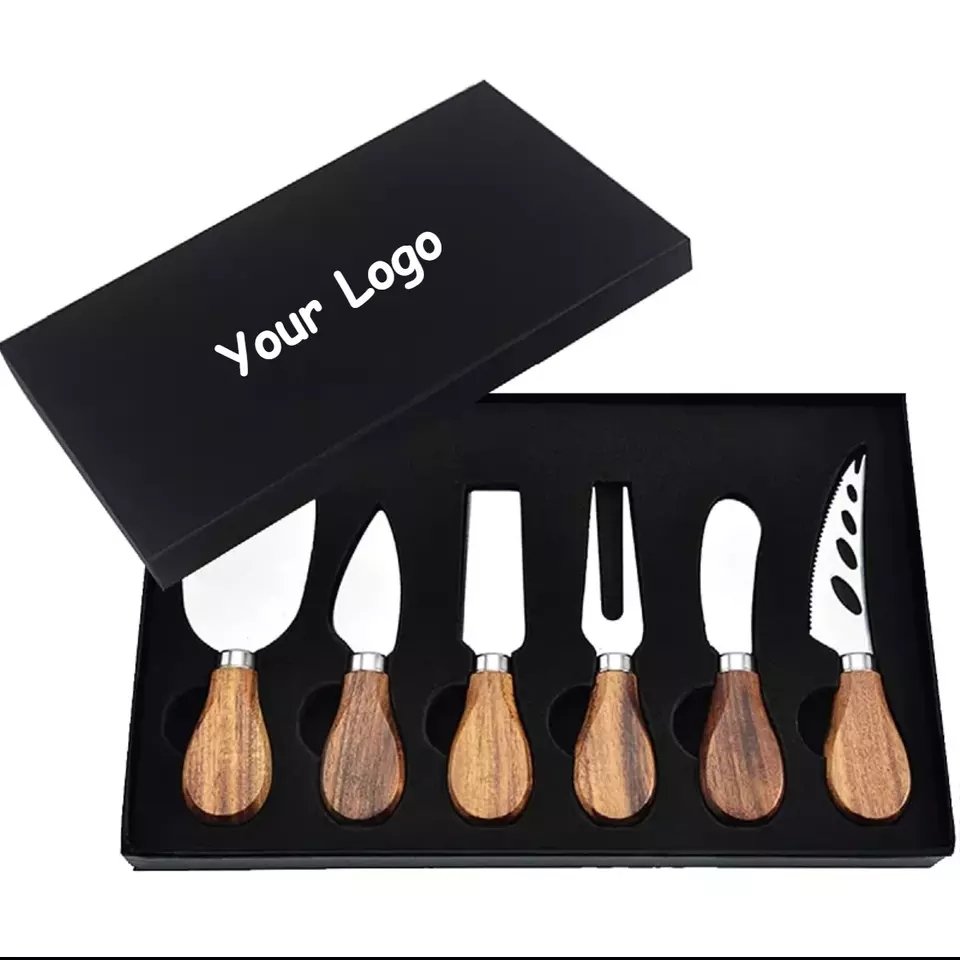Too many buyers waste money on cutlery that doesn’t last. The real reason? They don’t understand what affects stainless steel cutlery prices.
Wholesale stainless steel cutlery pricing depends on material grade, weight, production complexity, and brand reputation. Higher nickel content and better polish drive up costs but also quality.
You’re here because you want to get good value. Maybe you’re sourcing for your brand or a restaurant project. Either way, you want solid answers. Let’s break this down together—clearly, practically, and honestly.
Table of Contents
What is a good grade of stainless steel for cutlery?
Many buyers pick based on looks. But choosing cutlery is about what you don’t see—what’s inside the steel.
The best cutlery-grade stainless steels are 18/10 and 18/8. These grades balance corrosion resistance, shine, and durability.
Why 18/10 and 18/8 Work So Well
Let’s look at the components:
🥄 Stainless Steel Grades: Composition, Performance & Application
| Grade | Chromium | Nickel | Rust Resistance | Price | Common Use |
|---|---|---|---|---|---|
| 18/10 | 18% | 10% | ⭐⭐⭐⭐⭐ Excellent | 💲💲💲 High | Luxury cutlery |
| 18/8 | 18% | 8% | ⭐⭐⭐⭐ Very Good | 💲💲 Mid | Everyday use |
| 18/0 | 18% | 0% | ⭐⭐ Basic | 💲 Low | Budget-friendly options |
18/10 cutlery is popular because it doesn’t rust easily and keeps its shine. Nickel adds brightness and improves resistance to acids and salts. That’s why hotel buyers or big hospitality clients prefer 18/10. I’ve even had clients tell me their cutlery sets looked like new even after five years of daily use.
But 18/10 isn’t the only option. 18/8 is similar but slightly cheaper. If your clients are price-sensitive or you’re running a promotion, 18/8 is a safe bet.
Some budget-conscious clients choose 18/0 to save money. But I always remind them: no nickel means lower resistance. If someone runs 18/0 in a commercial dishwasher, especially with hard water, the surface starts to dull fast.
When selecting a grade, think of your buyer. What will they use the cutlery for? How long do they expect it to last? What matters more—price or performance?
What is the highest quality stainless steel cutlery?
Not all stainless steel is created equal. Some are built to last a lifetime, others won’t survive a season.
304-grade stainless steel, also known as 18/10 or 18/8, is widely accepted as the highest quality for cutlery. For extreme durability, 316 stainless steel is even better.
What Makes Steel “Highest Quality”?
There are many ways to measure “quality”:
🧪 Stainless Steel Comparison: 304 vs. 316 vs. 430
| Factor | 304 (18/10) | 316 (Marine Grade) | 430 (18/0) |
|---|---|---|---|
| Corrosion Resistance | ⭐⭐⭐⭐ High | ⭐⭐⭐⭐⭐ Very High | ⭐⭐ Low |
| Durability | ⭐⭐⭐⭐ High | ⭐⭐⭐⭐⭐ Extremely High | ⭐⭐ Moderate |
| Price | 💲💲 Moderate | 💲💲💲 High | 💲 Low |
| Nickel Content | 8–10% | 10–14% | 0% |
| Use Case | Home, hotels | Ships, hospitals, labs | Budget households |
304 is the industry standard. It resists rust, holds polish, and stays strong. But for environments with saltwater or acidic foods, 316 performs better. I’ve met buyers from coastal restaurants who insist on 316 because they need it to survive high humidity.
Still, 316’s price is 30–50% higher. If you’re importing for resale, you have to weigh if the margin justifies the quality. Most of my clients stick to 304 unless there’s a special request.
Why are cutlery so expensive?
You see a fork. I see material, machines, labor, and polish. It’s not just about metal—it’s about the craft.
Cutlery gets expensive when made from premium stainless steel, with thick gauge, complex molds, and fine polish. Brand reputation also adds a premium.
Where Does the Cost Come From?
Let’s break it down.
💎 What Drives the Cost of High-End vs. Budget Cutlery
| Cost Component | Description | High-End Cutlery | Budget Cutlery |
|---|---|---|---|
| Material | 304/316 stainless steel with nickel vs. 430 without | ✔️ Yes | ❌ No |
| Thickness | Thicker metal feels premium and lasts longer | ✔️ Yes | ❌ No |
| Polish | Mirror finish requires skilled labor and time | ✔️ Yes | ❌ No |
| Design | Unique molds and ergonomic shaping increase cost | ✔️ Yes | ❌ No |
| Labor | Hand-polished edges, seamless joints add value | ✔️ Yes | ❌ No |
| Brand Value | Reputable brands can add up to 30% in perceived value | ✔️ Yes | ❌ No |
If you walk through a production line, you’d be surprised at how much manual work is still involved. Every spoon goes through polishing belts, often more than once. A sharp edge has to be rounded by hand. The mirror polish you see on luxury cutlery is not automatic.
If you want luxury, you pay for the hours of labor, attention to detail, and brand story.
What flatware do high-end restaurants use?
When dining costs hundreds per head, even the cutlery needs to match the vibe.
High-end restaurants often use 18/10 stainless steel flatware from reputable European or Japanese brands, ensuring both style and performance.
What Makes Flatware Fit for Fine Dining?
Restaurants don’t just buy based on price—they buy based on experience. Let’s see how high-end restaurants choose:
| Feature | Why It Matters | High-End Choice |
|---|---|---|
| Material | Must resist frequent dishwasher cycles | 18/10 Stainless Steel |
| Weight & Feel | Heavier pieces feel more premium | 2.5mm–3.5mm thick |
| Design Aesthetic | Matches table theme and branding | Minimalist / Custom |
| Finish | Mirror or brushed finish depending on ambiance | Hand-polished |
| Supplier Reputation | Guarantees quality and consistency | European Brands |
Many fine dining restaurants use cutlery that matches their plating style. I’ve helped Michelin-starred clients customize the entire flatware range, right down to engraving their logo subtly on the handle’s back.
They care about consistency. One scratch, and it ruins the look. So they go for electro-polished surfaces, double nickel coating, and custom packaging to protect each piece. All that adds to the price—but it’s part of the luxury experience.
How can you tell if cutlery is good quality?
Looks can be deceiving. Some shiny pieces bend at the first steak test.
Check for weight, balance, polish, and whether it’s made from 18/10 or 18/8 stainless steel. Quality cutlery won’t rust, feel too light, or have sharp edges.
The Real Quality Tests
Here’s a checklist I give my clients during product demos:
| Test | What to Look For | What It Tells You |
|---|---|---|
| Weight | Moderate to heavy | Denotes material density |
| Surface Finish | Even, mirror or satin | Tells you polishing quality |
| Edge Finish | No sharp corners or burrs | Shows attention to detail |
| Balance | Should feel stable when held | Reflects ergonomic design |
| Magnet Test | Weak attraction if any (18/10 is non-magnetic) | Confirms grade (not foolproof) |
| Bend Test | Handle shouldn’t flex under pressure | Indicates material thickness |
One of my clients once tested our forks using boiled potatoes and steak cuts—simple, but brilliant. He wanted to feel how it pierced and how it handled when scraping sauce off a plate. That’s the level of detail professionals go into.
If you’re importing for retail, make sure your manufacturer doesn’t cut corners on edge polishing or weight. Your end customer will notice—instantly.
Which grade stainless steel is cheaper?
Not all grades hit your wallet the same way.
18/0 stainless steel is usually the cheapest because it contains no nickel, making it less resistant to rust and dull over time.
Why Nickel Costs More Than You Think
Let’s compare the raw material impact:
| Test | What to Look For | What It Tells You |
|---|---|---|
| Weight | Moderate to heavy | Denotes material density |
| Surface Finish | Even, mirror or satin | Tells you polishing quality |
| Edge Finish | No sharp corners or burrs | Shows attention to detail |
| Balance | Should feel stable when held | Reflects ergonomic design |
| Magnet Test | Weak attraction if any (18/10 is non-magnetic) | Confirms grade (not foolproof) |
| Bend Test | Handle shouldn’t flex under pressure | Indicates material thickness |
Nickel is expensive. In China, when nickel prices spike, I immediately get calls from clients asking for quotes in 18/0 to save money. But I always remind them—18/0 can discolor and rust, especially when used with acidic food or dishwashers.
Some manufacturers reduce thickness or simplify design to cut costs. But changing the steel grade is the biggest factor. So if your budget is tight, you’ll find 18/0 much cheaper, sometimes up to 30% less.
Still, low cost comes with trade-offs. Make sure your buyers understand the pros and cons. For fast-food chains or disposable catering events, 18/0 works. For anything luxury—it doesn’t.
Which stainless steel brand is best?
There’s no single “best” brand, but some stand out in the industry for consistency and trust.
Brands like ArcelorMittal, Outokumpu, and Nippon Steel are considered top choices for stainless steel raw materials. For finished cutlery, EME, Zwilling, and Sambonet are market leaders.
Trust Comes from Consistency
Raw material suppliers matter because they affect the whole production process. Here’s a breakdown:
| Brand Name | Country | Style Strength | Price Tier |
|---|---|---|---|
| Zwilling | Germany | Sleek, functional, durable | High |
| Sambonet | Italy | Elegant, design-focused | High |
| Oneida | USA | Commercial restaurant grade | Mid |
| Viners | UK | Affordable and modern | Mid |
In my own factory, we’ve tried different steel sources. Outokumpu coils consistently gave us better yield rates in polishing. Less surface pitting, fewer reworks. That saves time and money in the long run, even if the upfront material cost is higher.
The best brand for you depends on your product positioning. Want reliable shine and no customer complaints? Choose quality brands. Competing on price only? Then maybe local steel is fine—but test it.

What is the best number for stainless steel silverware?
Numbers like 18/10, 18/8, and 18/0 confuse many first-time buyers. But they hold the secret to performance.
The best number is 18/10. It offers the best balance of corrosion resistance, luster, and durability for stainless steel cutlery.
What Do Those Numbers Really Mean?
The numbers refer to the percentage of chromium and nickel:
| Number | Chromium | Nickel | Performance Level |
|---|---|---|---|
| 18/10 | 18% | 10% | Excellent |
| 18/8 | 18% | 8% | Very Good |
| 18/0 | 18% | 0% | Basic |
Chromium adds corrosion resistance. Nickel adds shine and acid resistance. So, higher nickel = longer life and prettier cutlery.
When clients ask me what to stock for hotel supply, I say: 18/10 all the way. If they’re launching a new brand and want to offer budget options, I might suggest a dual approach—premium 18/10 for flagship, 18/0 for volume.
But one thing is clear: those little numbers make a big difference in how customers feel when they eat.
What are the expensive cutlery brands?
Premium cutlery isn’t just about function. It’s about image, heritage, and detail.
Luxury cutlery brands like Christofle, Robbe & Berking, and Sambonet are known for handcrafted finishes, precious metals, and refined European designs.
What Makes These Brands Expensive?
Let’s break down what you’re really paying for:
| Brand | Country | Material Used | Unique Value | Typical Price (per set) |
|---|---|---|---|---|
| Christofle | France | Silver-plated / Sterling | Royal family heritage, fine silversmithing | $500 – $3000+ |
| Robbe & Berking | Germany | 925 Sterling Silver | 100% handcrafted in Germany | $800 – $4000+ |
| Sambonet | Italy | 18/10 Stainless / Silver | Modern design, Italian craftsmanship | $200 – $800 |
| Ercuis | France | Silver-plated | Classic Parisian dining elegance | $600 – $2000 |
| Georg Jensen | Denmark | Stainless / Silver | Minimalist Scandinavian luxury | $300 – $1500 |
These brands focus on:
| Aspect | Explanation |
|---|---|
| Hand-finishing | Crafted by artisans instead of machines for superior detail and uniqueness |
| Silver and Sterling | True sterling silver (92.5%) increases cost and requires careful maintenance |
| Packaging | Premium boxes and velvet linings enhance unboxing experience and gift appeal |
| Heritage | Represents brand legacy and centuries-old craftsmanship—more than just cutlery |
One of my European clients once gifted a Christofle set for a wedding. The packaging, the weight, the shine—it left everyone in awe. In this world, emotion and storytelling matter just as much as steel.
For wholesalers and retailers, these brands are often out of budget. But they set the benchmark for quality and elegance—and influence trends in mid-tier brands.
How much should I spend on cutlery?
It depends. Are you feeding 100 guests at a wedding, or stocking your Airbnb? Budget changes everything.
For everyday quality, $1–$2 per piece is a good benchmark. For high-end or branded sets, $5–$20 per piece is normal.
Match Price with Purpose
Here’s a price guide by use case:
| Use Case | Target Price per Piece | Recommended Grade | Notes |
|---|---|---|---|
| Casual Home Use | $0.50 – $1.50 | 18/0 or 18/8 | Basic function, cost-sensitive |
| Restaurant / Hospitality | $1.50 – $3.00 | 18/8 or 18/10 | Must survive dishwashers |
| Wedding or Event Bulk | $0.30 – $1.00 | 18/0 | Looks good once, may tarnish |
| Premium Home Use | $2.00 – $5.00 | 18/10 | Durable, aesthetic, balanced weight |
| Luxury or Designer Sets | $5.00 – $20.00+ | 18/10 or Sterling | Prestige, style, heirloom quality |
For B2B buyers, price also depends on quantity. One of my clients from Turkey ordered 100,000 pieces of 18/0 for a hotel chain. We negotiated the cost down to $0.42 per spoon, including a satin finish and logo engraving.
But for smaller batches or complex designs, the price per piece rises. Always calculate based on total lifecycle value—good cutlery lasts years. Cheap ones? Weeks.
What are the disadvantages of stainless steel cutlery?
It’s popular for a reason—but stainless steel isn’t perfect.
Stainless steel cutlery can lose shine over time, lacks the luxury feel of silver, and lower grades may rust or bend if misused.
When Stainless Steel Isn’t Enough
Let’s look at the common downsides:
| Issue | Why It Happens | How to Reduce It |
|---|---|---|
| Dulling Over Time | Polishing wears off, dishwasher wear | Use 18/10, polish occasionally |
| Rust Spots (esp. on 18/0) | No nickel, reacts to acid/water | Choose 18/10 or 304 |
| Heat Conductivity | Handles may get warm in hot dishes | Use plastic/wood handle alternatives |
| Limited Prestige | Lacks the “luxury” of silver or gold | Use engraved or custom finishes |
| Cost for High-End Versions | Premium stainless can be pricey | Consider 18/8 as a compromise |
Even among stainless types, differences are vast. For example, I once got feedback from a café chain—they had bought a batch of 18/0 cutlery elsewhere, and rust showed up after two months. We replaced it with 18/10, and they’ve been loyal clients ever since.
Stainless is reliable, but it’s not invincible. You still need proper cleaning, drying, and storage. And for ultra-premium appeal, sometimes silver or hybrid materials might be a better fit.
Is cutlery a good business?
Let’s be real. This is not the tech world. But there’s steady profit in cutlery—if you know your niche.
Yes, cutlery can be a good business if you understand your target market, maintain product quality, and offer competitive pricing with consistent supply.
The Cutlery Business Landscape
Here’s a look at key factors:
| Business Type | Pros | Cons |
|---|---|---|
| B2B Wholesale | Large volumes, repeat clients | Price-sensitive, tight margins |
| Retail / E-commerce | Higher margins, brand building possible | Needs marketing and logistics setup |
| OEM Manufacturing | Custom orders, long-term partners | High MOQ, production risk |
| Private Label | Control over brand, loyal base possible | Requires design and packaging investment |
| Distributor Role | Easy entry, no production | Dependency on factory quality and delivery |
Cutlery isn’t a “get rich fast” sector. But it’s durable, steady, and recession-resistant. People will always eat. Hotels, restaurants, airlines, hospitals—they need replacements, upgrades, expansion.
I’ve seen startup importers grow from 1 container a year to 10 containers a month—just by specializing in one vertical, like kid’s cutlery or airline sets.
Margins might be thin at first. But if you build supplier trust, avoid quality issues, and manage logistics, this business can absolutely pay off.
What grade stainless steel utensils are best?
Not every spoon is created equal. Some bend. Some rust. Some shine for years.
The best grade for stainless steel utensils is 18/10, offering superior corrosion resistance, luster, and long-term durability.
What Makes 18/10 Stand Out?
Let’s go deeper into what makes 18/10 ideal for cutlery and utensils:
| Grade | Chromium | Nickel | Shine | Rust Resistance | Durability | Dishwasher Safe |
|---|---|---|---|---|---|---|
| 18/10 | 18% | 10% | High | Excellent | Excellent | Yes |
| 18/8 | 18% | 8% | Very Good | Very Good | Very Good | Yes |
| 18/0 | 18% | 0% | Moderate | Basic | Basic | Risky |
Nickel makes a big difference. It prevents corrosion and maintains gloss. For kitchen tools that touch food every day—spoons, ladles, spatulas—you want something that doesn’t chip or stain.
I’ve supplied 18/10 utensil sets to professional kitchens, and chefs often tell me the difference is obvious. The handles stay smooth, and the bowl of the spoon never turns gray even with daily soup service.
Yes, 18/10 costs more. But if your client values product longevity and low return rates, the benefits outweigh the price.
Which is better, 18-10 or 18 0 stainless steel flatware?
It’s one of the most asked questions from new buyers. The answer depends on priorities.
18-10 is better than 18-0 in terms of shine, rust resistance, and feel. 18-0 is only preferred when price is the top concern.
Side-by-Side Comparison
Let’s break down what really separates these two:
| Feature | 18-10 | 18-0 |
|---|---|---|
| Nickel Content | 10% | 0% |
| Shine | High gloss, luxury feel | Satin, duller finish |
| Rust Resistance | Excellent | Basic |
| Dishwasher Use | Safe long-term | Risk of staining over time |
| Price | Higher | Lower |
| Target Audience | Hotels, restaurants, premium users | Budget homes, bulk buyers |
18-10 gives a smooth, high-end experience. It resists acidic foods like vinegar and tomato sauces. It won’t corrode with washing. That’s why upscale restaurants use it.
18-0 can be good enough for budget buyers or events. But the lack of nickel means it will never achieve the same mirror polish. And under humid storage? It may rust.
I had a client in Brazil who switched to 18-0 to save 15% per set. Six months later, they switched back to 18-10. The returns were costing them more than they saved.
Is 18/8 or 304 stainless better?
They are often used interchangeably—but let’s clear it up.
18/8 is a shorthand for 304 stainless steel. They refer to the same alloy composition and quality level.
Dive Deeper: Two Names, One Steel
Here’s the breakdown:
| Term | Meaning | Nickel % | Chromium % | Use in Cutlery |
|---|---|---|---|---|
| 18/8 | 18% Chromium, 8% Nickel | 8% | 18% | Common |
| 304 | Steel Grade Number | 8–10% | 18–20% | Common |
Both 18/8 and 304 refer to the same material category. One is a composition description (18/8), the other is the industry standard name (304). Sometimes, 304 includes up to 10% nickel, which overlaps with 18/10.
Some factories use the names based on their target market. In China, we usually mark it as 304 when exporting to technical buyers. For retail branding, we label it as 18/8.
So, don’t get confused—if someone sells you 304 cutlery, they are giving you 18/8. And it’s a good, reliable option.
What is the difference between 304 and 316 stainless steel?
Both are great, but one is built for more extreme conditions.
316 stainless steel has molybdenum added, giving it better resistance to corrosion, especially in salty or acidic environments. 304 is ideal for most food applications.
When Do You Need 316?
Here’s the technical comparison:
| Grade | Chromium | Nickel | Molybdenum | Corrosion Resistance | Common Use |
|---|---|---|---|---|---|
| 304 | 18–20% | 8–10% | 0% | High | Kitchenware, cutlery |
| 316 | 16–18% | 10–14% | 2–3% | Very High | Medical tools, marine use |
Molybdenum is the secret. It gives 316 an edge in salty or acidic environments. So if your cutlery will be used near the ocean, in seafood kitchens, or medical-grade kitchens—316 is worth it.
But it’s expensive. Up to 40% more than 304 in some markets. For typical dining or restaurant use, 304 is enough.
I’ve had clients in Southeast Asia, especially coastal resorts, who only use 316 for spoons and knives. They see fewer replacements and better customer satisfaction.
For most buyers, though? Stick to 304 unless your conditions are extreme.
Stainless steel cutlery pricing depends on material, grade, polish, and positioning. Knowing what goes into each piece helps you make better decisions—and better deals.





